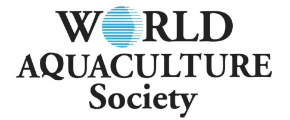GROWTH, SURVIVAL AND HAEMATOLOGICAL RESPONSES OF Heterobranchus bidorsalis JUVENILES TO CHANGES IN PHOTOPERIOD
This study assessed the influence of photoperiods on growth and blood haematology of H. bidorsalis juveniles. Fish exposed to photoperiod of 24L: 0D, 18L: 6D, 12L: 12D, 6L: 18D and 0L: 24D were tested for growth and nutrient utilization (feed intake, mean weight gain (MWG), feed conversion ratio (FCR), specific growth rate (SGR), gross efficiency of feed conversion (GEFC), survival rate and haematology (packed cell volume (PCV), red blood cells (RBC), haemoglobin, white blood cells (WBC), platelets and white blood cell differentials). Data obtained were subjected to a one-way ANOVA and Fishers LSD follow-up test was used to separate the means. Differences were considered significant at p <0.05 and correlation analysis used to test relationship between variables.
Fish in 6L: 18D and 0L: 24D fed better (12.50+1.30g and 10.30+0.59g) with the highest weight gains (22.30+ 4.48g and 20.40+5.63g) while 24L: 0D and 18L: 6D, (8.9+1.38g and 15.0+3.77g) had the least values. FCR, SGR, GEFC and survival rate were not significantly different. However, analysis of the blood haematology revealed significant differences in blood parameters (p<0.05). 24L: 0D, 18L: 6D had higher lymphocyte: neutrophil ratio, 68:24 and 67:27 respectively compared to the control (12L: 12D) which recorded 71:21. The findings indicate that exposure to continuous light for a long duration could predispose this fish to stress while extended period of darkness achieves better growth and higher weight gain.
Key words: Growth, Photoperiod, Haematology, Heterobranchus bidorsalis
Fish in 6L: 18D and 0L: 24D fed better (12.50+1.30g and 10.30+0.59g) with the highest weight gains (22.30+ 4.48g and 20.40+5.63g) while 24L: 0D and 18L: 6D, (8.9+1.38g and 15.0+3.77g) had the least values. FCR, SGR, GEFC and survival rate were not significantly different. However, analysis of the blood haematology revealed significant differences in blood parameters (p<0.05). 24L: 0D, 18L: 6D had higher lymphocyte: neutrophil ratio, 68:24 and 67:27 respectively compared to the control (12L: 12D) which recorded 71:21. The findings indicate that exposure to continuous light for a long duration could predispose this fish to stress while extended period of darkness achieves better growth and higher weight gain.
Key words: Growth, Photoperiod, Haematology, Heterobranchus bidorsalis













